Alcatel 5 Review
Alcatel 5 Review
Misses the mark
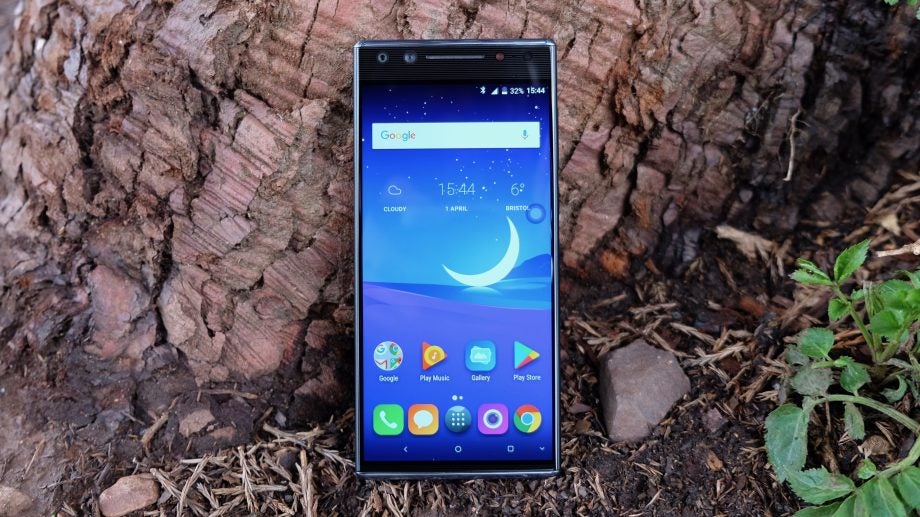
Verdict
Pros
- Big, accurate display
- Minimal bezel
- Decent camera for the price
Cons
- Ugly design
- Clunky software
- Mediocre performance
- Old version of Android
Key Specifications
- Review Price: £230
- 5.7-inch 720 x 1440 IPS LCD
- MediaTek MT6750 CPU
- 3GB RAM
- 32GB storage
- 12MP rear camera
- Dual 13MP + 5MP front camera
- 3000mAh battery
- Android 7.1 Nougat
What is the Alcatel 5?
The Alcatel 5 is the most capable of the French brand’s early-2018 smartphone range, although it isn’t your typical flagship phone.
At just £230, it sits firmly at the lower end of the market, with a few interesting features setting it apart from the £220 Moto G6. With a long bezel-less display and a dual selfie camera setup, it’s an intriguing option for those who want a little more than the bare essentials.
Whether that’s enough to make up for deficiencies in the basic user experience is something we’ll need to spend a little time discussing.
Related: Best Android phones
Alcatel 5 – Design
Alcatel has gone for something a little different with the Alcatel 5 design, which is deserving of some credit. There’s none of the usual Apple and Samsung copy-cattery on display here, that’s for sure.
Which isn’t to say that the Alcatel 5’s distinctive design is wholly successful. The brand has bravely gone against the current obsession with metal to produce an all-plastic phone, although it leans on faux-metal finishes a little too much.
There’s a brushed effect on the wrap-around rear and sides, although it’s subtle enough to be inoffensive. This is loosely mirrored by a slightly retro horizontal line pattern under the cover glass (inaccurately labelled as 2.5D by Alcatel) immediately above and below the display.
It’s a little regrettable that Alcatel has opted for a fake shiny metal effect for the plastic ends. These contain the 3.5mm and USB-C ports, as well as the phone’s speaker, but they look a little naff.
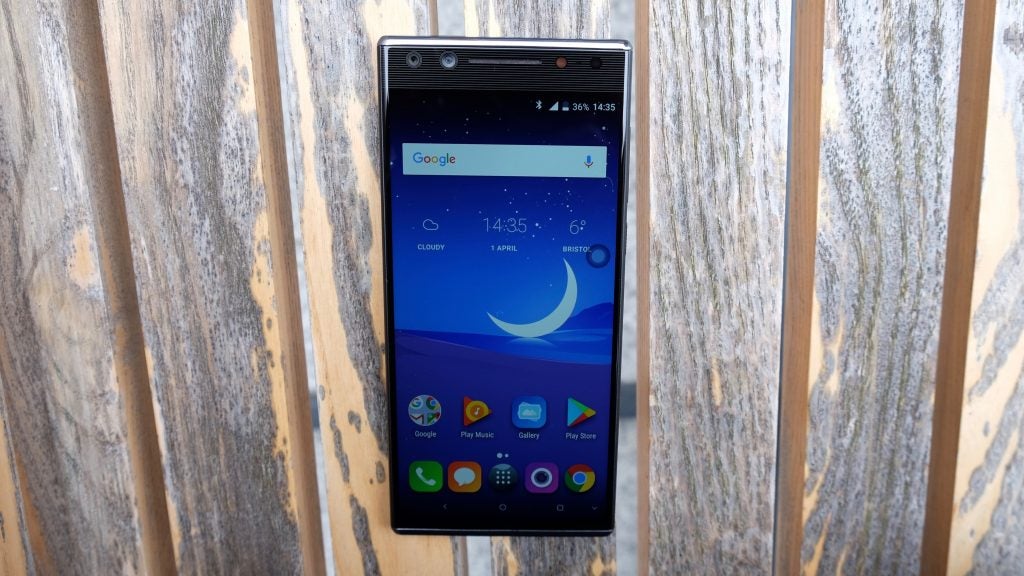
The headline feature here is a supposedly “Bezel-less Design” (Alcatel’s exact words), but it’s really nothing of the sort. With a huge forehead, visible chin, and small but clearly present side borders, the front of the phone certainly isn’t without bezel.
Meanwhile, the size disparity between the Alcatel 5’s forehead and chin leaves it looking a little lopsided. Franken-forehead aside, the other three of those screen borders are undoubtedly smaller than your average budget phone.
In fact, this is quite a pleasant phone to hold thanks to a narrow 71.1mm body with a modest 8.45mm thickness. Combined with a just-so weight of 144g and smooth rounded edges, it fits in the hand very snugly indeed.
Thanks to that narrowness, those with long fingers will need to contort their forefinger more than usual to reach the Alcatel 5’s fingerprint sensor. It’s located in the Android position of just below the camera module.
This isn’t the best example I’ve encountered, even at the lower end of the smartphone market. It works most of the time, but can be sluggish, and there were just enough mis-reads to cross that hard-to-pinpoint doubt barrier.
Related: Best Budget Smartphone
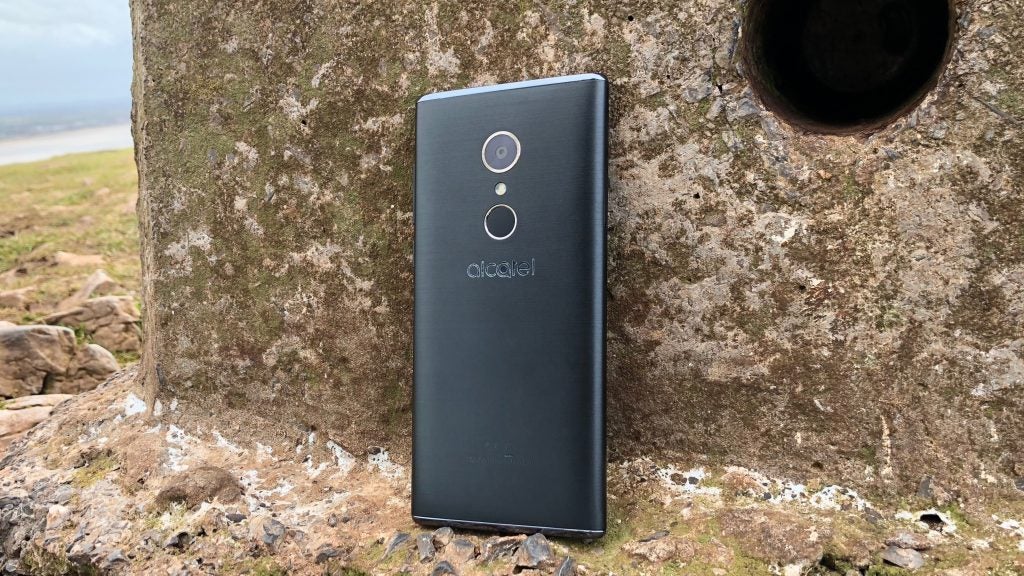
Perhaps fortunately then, Alcatel has included its own facial unlock system called Face Key. This isn’t the advanced 3D facial mapping system of the iPhone X, but then no-one outside of Apple is using such an advanced component right now.
Face Key uses the Alcatel 5’s front camera to provide a simple scan of your face. I found that it worked pretty well in moderate to decent lighting, provided your face is positioned dead-centre and is completely unobstructed. However, it doesn’t work in low lighting and you should note that it’s less secure than fingerprint authentication.
Alcatel 5 – Screen
The Alcatel 5’s 5.7-inch 18:9 IPS LCD is a stand-out component.
It isn’t completely unheard of to find such a stretched-out ‘FullView’ display in a £200 phone – the Honor 9 Lite pulled off a similar trick just recently -– but it’s still rather rare.
However, where the Honor 9 Lite boasted a suitable 2160 x 1080 FHD+ resolution, the Alcatel 5 screen comes in at a slightly disappointing 1440 x 720. This isn’t a disaster by any means, but there’s undoubtedly a certain fuzziness to small text and thumbnails when browsing the web.
It seems a strange decision to provide a widescreen media-friendly 18:9 aspect ratio, but then not to provide the ability to watch Full HD content.
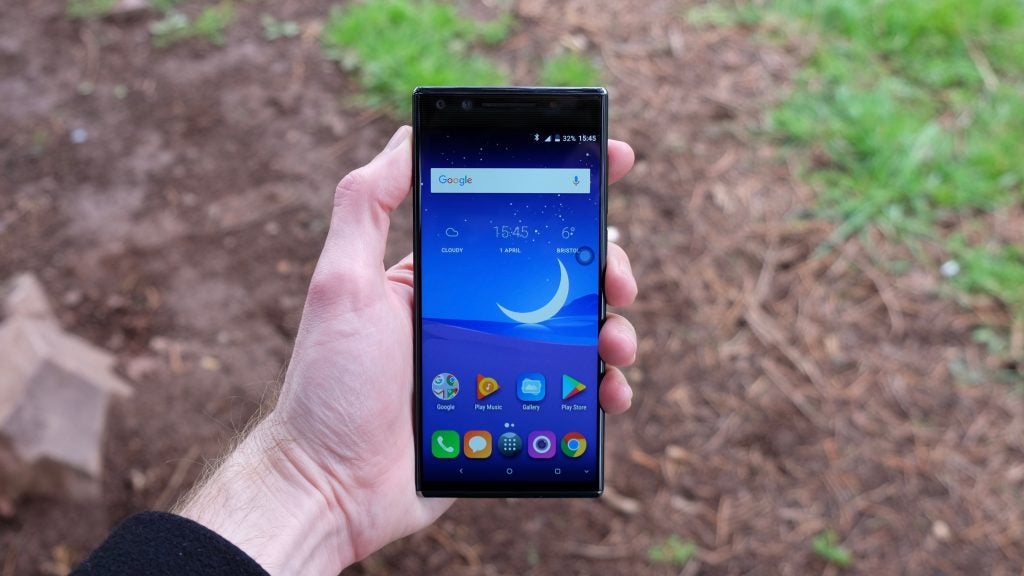
Resolution shortfall aside, the Alcatel 5’s display is quite nicely balanced. It’s an LCD, so colours don’t exactly pop, but they’re reasonably accurate and natural-looking compared to the garish skin tones and luminous reds of cheaper AMOLED panels.
There’s a slight icy blueness to the display by default, but this can be tweaked in the extensive (if poorly laid out) MiraVision tuning options within the settings menu.
The Alcatel 5’s display can get pretty bright, at least for indoor use, if you switch off the overly aggressive adaptive brightness function. It’s considerably less legible when used outdoors during the day, although this is a common trait among cheaper phones.
Alcatel 5 – Performance
The Alcatel 5 is powered by a MediaTek MT6750 CPU, which is a slightly creaky low-end CPU.
Given that the phone costs upwards of £200 (if only just), it’s a shame that it wasn’t fitted out with something a little more punchy. I’m thinking of the Snapdragon 625 used by the Moto G5S Plus, or even the MediaTek Helio P25 found in the Doogee Mix 2.
Both of those phones have a similar price to the Alcatel 5, yet they perform much better. A Geekbench 4 multi-core score of 2474 compares unfavourably to both the Moto G5S Plus (4460) and the Doogee Mix 2 (4032). The Honor 9 Lite, with its more pixel-dense take on the edge-to-edge display and its humdrum Kirin 659 CPU, scored 3644.
The Alcatel 5’s mediocre processor is, at least, backed by a comfortable 3GB of RAM, which ensures that the Android OS runs without too many issues.
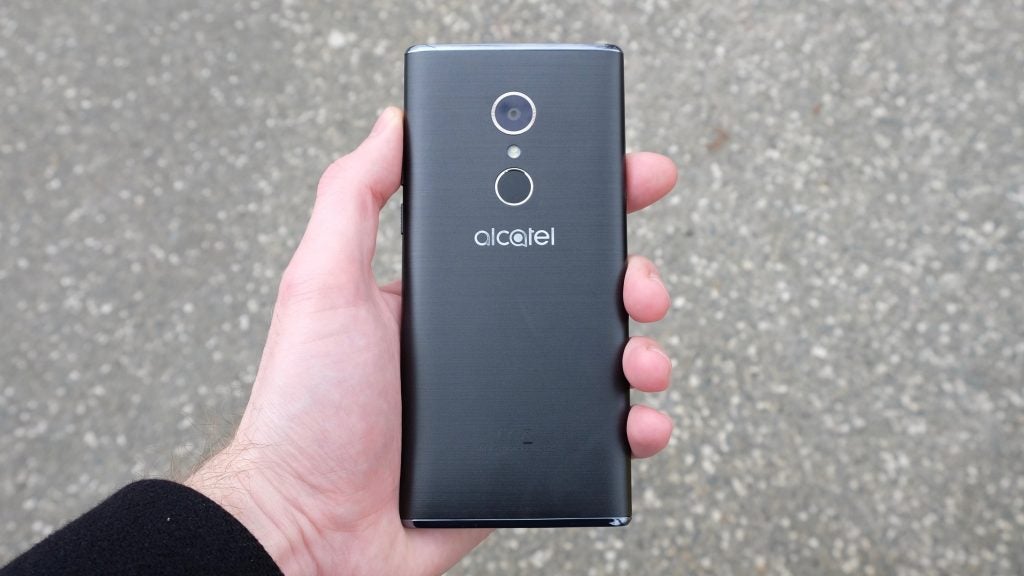
While general performance isn’t a disaster, it’s hardly snappy either. Unlocking the phone biometrically, whether with the fingerprint sensor or Face Key, comes with a lengthy pause. Jumping into and between apps also makes the phone puff a little.
When it comes to gaming, the Alcatel 5 runs Guns of Boom pretty well – although there are a few stutters when you first load into a level of a fast-paced online FPS. On the rather more demanding PUBG Mobile, where the graphics were set to low by default, I found the experience to be playable, if a little halting.
32GB of storage is pretty much expected for a phone at this price these days, as is the provision of a microSD slot for up to 128GB of expansion.
Alcatel 5 – Software
The Alcatel 5 runs on Android 7.1 Nougat, which dates all the way back to December 2016. It’s far from the latest version of Google’s mobile OS.
Not that you’ll immediately recognise the version of Android by looking at it. Yes, Alcatel is another smartphone brand that thinks it knows better than the world’s biggest software company when it comes to UI design.
Thankfully, it isn’t the most heavy-handed custom Android UI I’ve ever used. The icons and backgrounds are different, as are the settings menus and the drag-up virtual command key menu, but the dropdown notification menu is largely unmodified.
There’s no Google Now option to the left of the homescreen. Rather, it seems to be buried at the bottom of the the Google widget. On the flip side, Google’s Assistant is readily available with a vocal prompt, which works reliably.
Also familiar is the presence of an app tray button at the bottom of the homescreen, which isn’t as common as it used to be. Alcatel lets you choose how you want this list of installed apps ordered – alphabetically, by frequency of use, or by date.
You also get a familiar suite of preinstalled apps (a compass, a sound recorder, a pointless Alcatel rewards and tutorial app) and games, which you’ll either adopt into your daily usage or – more likely – replace with superior third-party alternatives.
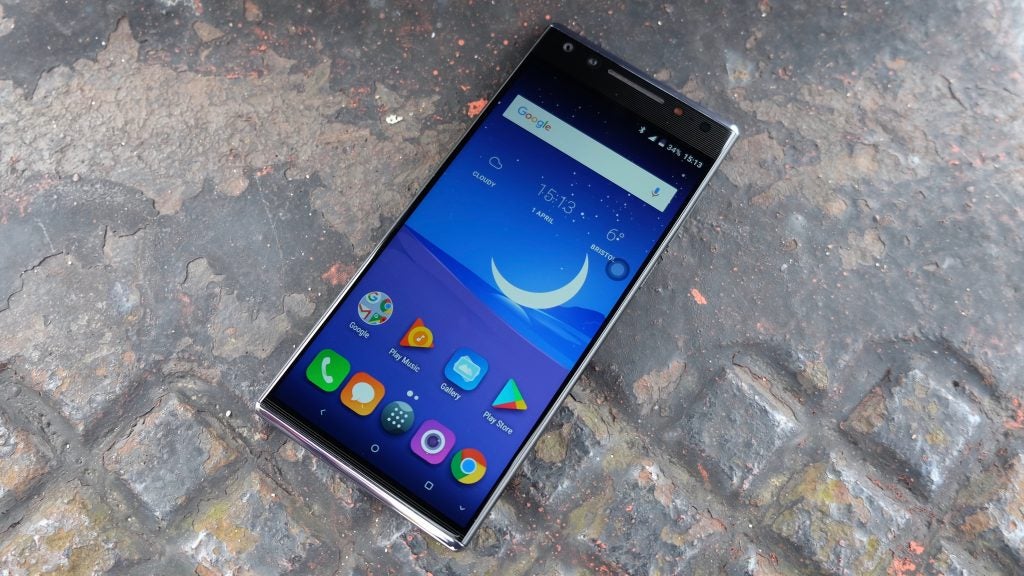
Perhaps the most obvious and even intrusive software addition is the Joy Touch overlay. This semi-transparent shortcut button hovers in a conspicuously inconspicuous fashion above the homescreen and even apps.
In practice, it’s a bit like that person who offers to help you move house, but ends up just being in the way. Joy Touch seems helpful in that it grants you access to a range of functions such as the calculator, timer, and flashlight from almost anywhere. But it’s a perpetual visual distraction, and most of my direct interaction with it was a press and hold to shuffle it out of the way.
Fortunately, you can deactivate Joy Touch in the settings menu. I suspect that many Alcatel 5 owners will make use of this toggle.
Alcatel 5 – Camera
Alcatel has gone with the trend of a dual-camera setup for the Alcatel 5, but not in the way you might expect.
It’s the front camera that gets the benefit of two lenses here, rather than the rear. You get a dual 13-megapixel and 5-megapixel ‘SmartSelfie DUO’ system, which automatically switches to a 120-degree wide-angle view when it detects more than two people in the frame.
I can kind of see the justification for this shift in attention, given that the types of people who will be buying or using such an affordable smartphone (predominantly young people) will often take far more pictures with the front camera than the rear.
Kudos to Alcatel also for assigning the fingerprint sensor to shutter control when in selfie mode.
Besides, the single 12-megapixel main camera on the Alcatel 5 is actually pretty decent as it is. During my time with the phone I found it to be reasonably snappy, with reliable autofocus and an intuitive UI.
What’s more, the shots I obtained were of a reasonable quality. Colours were balanced and natural-looking, street shots didn’t suffer from motion blur, and my subject was generally in focus without requiring my interference.
As always with affordable cameras, this comes with the caveat that you need plenty of light to get decent results. Beyond a certain point, low-light shots became predictably blurry and ugly.
At the other end of the scale, the Alcatel 5 handled dramatic skies reasonably well, unlike most affordable phones.
Normally when reviewing a cheap phone, I’ll end up taking two identical landscape pictures – one with HDR mode turned on, and the other with it off – to see how it handles extremes of light and shade (‘terribly’ being the typical answer). That didn’t seem relevant with the Alcatel 5, however, because it comes with an automatic HDR mode by default.
This HDR mode isn’t perfect by any means – a fair selection of wide beach shots on a bright-but-cloudy day yielded a slightly murky foreground. However, it did prove effective at minimising that bleached-out sky effect, all without creating the uncanny Instagram filter look of many entry-level HDR modes.

The dramatic vista of this shot is captured well, although the foreground is a little murky

Auto-HDR handles skies well

The skies are again well handled by auto-HDR

The camera locks onto its subject well

After drawing a single curtain, the Alcatel 5 doubles the ISO and the results take a nose-dive
Alcatel 5 – Battery life
The Alcatel 5 doesn’t pull up any trees on the battery life front, but it will comfortably see you through a day of normal usage.
Its 3000mAh capacity isn’t particularly remarkable for a modern smartphone with a 5.7-inch display, but the phone’s low-power processor and 720p resolution make it look a little more generous.
It can certainly stand up to advanced tasks without putting too much of a dent in your day. Watching a 50-minute downloaded TV programme with the screen brightness bumped right up sapped just 6% of the Alcatel 5’s battery life, which is significantly better than the Honor 9 Lite (14%) and its 1080p display.
Curiously, it sapped the same 6% after playing 15 minutes of Guns of Boom at half screen brightness, which is an identical result to the Honor 9 Lite. Whether this is an indication of a less-efficient GPU or some other factor I’m not sure. Either way, it’ isn’t a bad result by any means.
It’s good to see the Alcatel 5 using the reversible USB-C standard for charging purposes, as this still isn’t a given at this end of the market.
Why buy the Alcatel 5?
The Alcatel 5 asks you to pay a little more than the accepted entry-level smartphone price for a couple of novel features, although their true worth is questionable.
Its stretched edge-to-edge 18:9 display certainly isn’t common at this price, but the Honor 9 Lite did it both earlier and better. Conversely, decent camera performance and an interesting wide-angle selfie feature mean the Alcatel 5 warrants a closer look if photography is an absolute priority.
Ultimately, though, a divisive design, mediocre performance and underwhelming software mean that it probably isn’t worth considering when the Moto G5S Plus offers a better core experience for the same money.
Verdict
The Alcatel 5 offers a dominating 18:9 display and reasonable camera performance for around £230. However, a slightly odd design, underwhelming performance and mediocre software make it hard to recommend in a strong field. The similarly priced Moto G5S Plus does the basics a lot better and with considerably more style.
How we test phones
We test every mobile phone we review thoroughly. We use industry standard tests to compare features properly and we use the phone as our main device over the review period. We’ll always tell you what we find and we never, ever, accept money to review a product.


